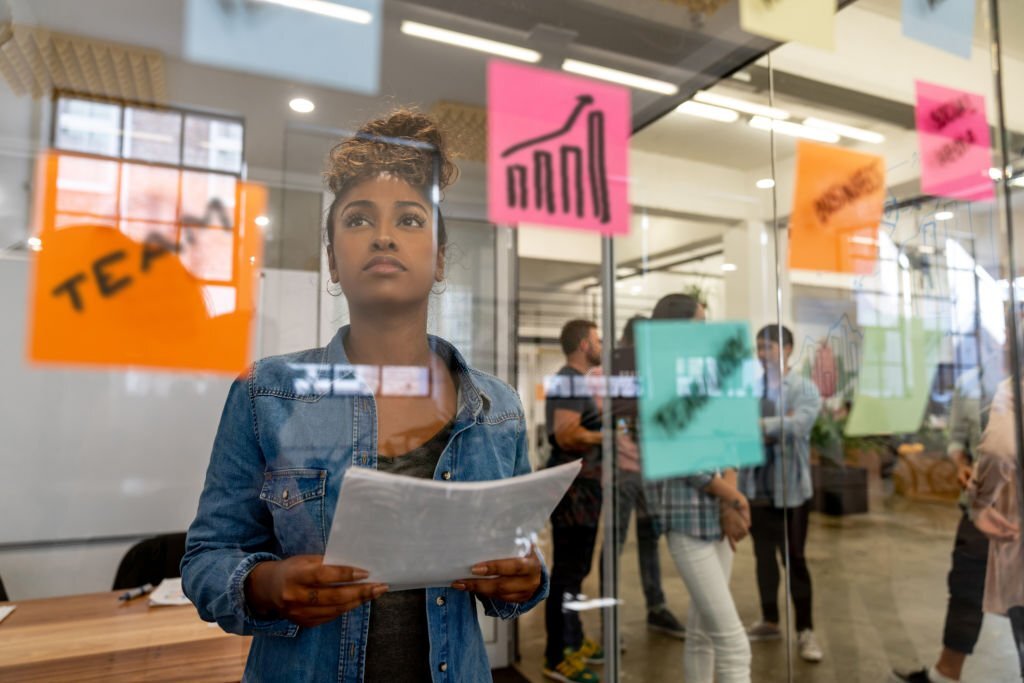
The Power of Design Thinking in The Workplace
Imagine a bustling office where the energy is palpable, the productivity sky-high, and the morale through the roof. This may seem like a pipe dream, but it doesn’t have to be. By applying design thinking principles, you can create a more efficient, productive, enjoyable, and fulfilling workplace for everyone involved.
Design thinking is a problem-solving approach that combines empathy, creativity, and rationality to create innovative solutions. It is a mindset that can be applied to any problem, big or small, and is particularly useful for tackling complex, ambiguous challenges.

The design thinking process. Image via Maqe.com
In the workplace, design thinking can be used to create new products, services, and processes that better meet the needs of employees and customers. It can also improve existing systems and processes, making them more efficient and user-friendly. The key to success is to involve employees and other stakeholders in the design process to ensure that the solutions are tailored to their specific needs.
One of the most potent aspects of design thinking is its ability to foster creativity and innovation. By encouraging employees to think outside the box and question assumptions, design thinking can unleash new ideas and solutions. This is particularly important in today’s fast-paced business environment, where staying competitive requires constant innovation.
Another critical benefit of design thinking is that it can improve the employee experience, leading to higher productivity and retention rates. By involving employees in the design process, design thinking helps create a sense of ownership and engagement in the developed solutions. This can lead to a more motivated and committed workforce, which is crucial for long-term success.
So, how do you get started with design thinking in your workplace? The first step is to understand the needs of your employees and customers. This means conducting in-depth research, such as interviews, surveys, and observations, to understand their pain points and aspirations. Once you have a clear picture of what is needed, you can begin the process of ideation, which is where the fun begins.

Design Thinking can help organisations create a more agile and adaptable workforce.
During ideation, employees and stakeholders are encouraged to brainstorm and share ideas, no matter how wild or unconventional they may seem. This is where creativity and innovation come in, as new and unexpected solutions emerge.
The next step is to prototype and test the ideas that have been generated. This is where the rationality comes in, as the team assesses which ideas are most feasible and likely to succeed. By testing the ideas in a low-stakes environment, you can quickly discover which solutions have the most potential.
Finally, the team can implement the chosen solutions and measure the impact. This allows the team to see whether the solutions are meeting the needs of employees and customers and to make adjustments as needed.
Design thinking is not a one-time event but an ongoing, continuously iterated and refined process. By repeating the steps of research, ideation, prototyping, and testing, you can continuously improve the workplace experience for everyone involved.
Recommended reading: The MacTay Open Programme: What You Need to Know
In conclusion, design thinking is a powerful tool for revolutionizing the workplace. Applying its principles of empathy, creativity, and rationality can create a more efficient, productive, and enjoyable workplace for everyone. By involving employees and other stakeholders in the design process, you can create a sense of ownership and engagement, which leads to higher productivity and retention rates.
Ready to take the next step? Sign up for our Design Thinking and Product Innovation training programme today. Click here to register










